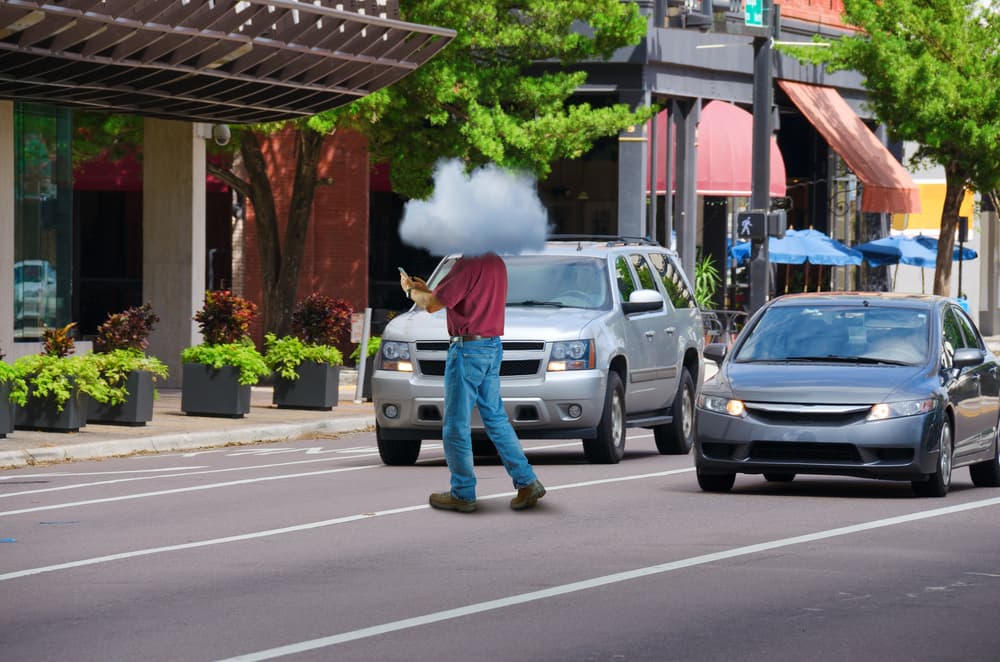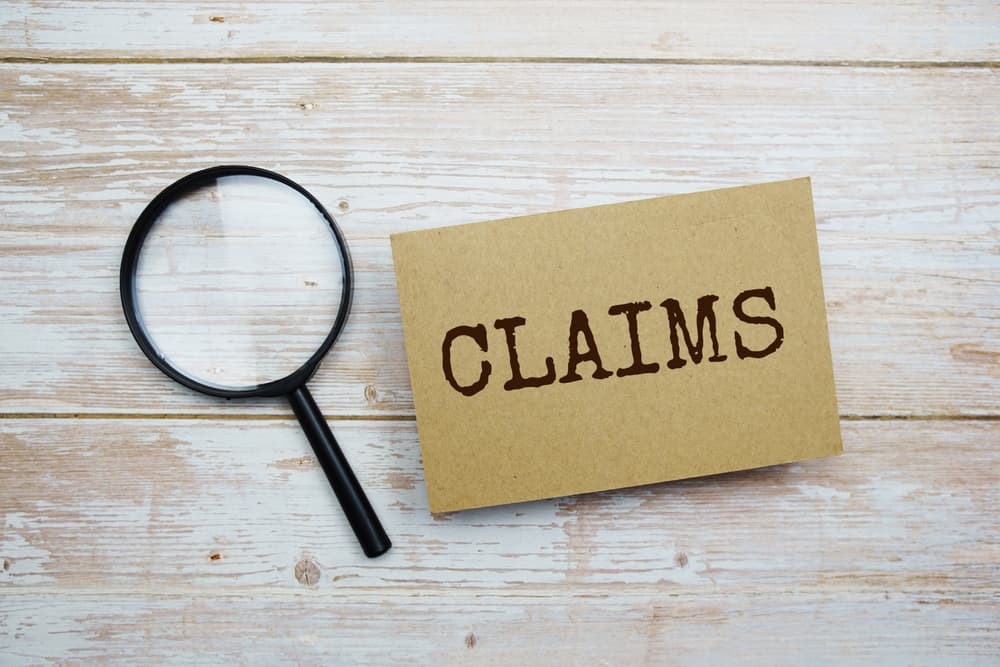So many questions swirl in your mind when you've been injured in a pedestrian accident. One of the most pressing is usually, “Can I file a claim if I was jaywalking during my pedestrian accident?”
The circumstances surrounding jaywalking can make you hesitant to explore your legal options. However, it’s important to understand that being partially at fault doesn’t always prevent you from seeking compensation. A pedestrian accident lawyer can help you understand your rights and navigate the complexities of your case.
Let’s look at how jaywalking may affect your ability to file a claim, what factors are considered, and what steps you can take to protect your rights.
What Does Jaywalking Mean, and Why Does It Matter in Legal Claims?

Jaywalking happens when a pedestrian crosses the street at a location other than a marked crosswalk or an unmarked crossing at an intersection, violating traffic laws.
It might seem like a minor infraction, but in legal terms, jaywalking could affect how liability for an accident is determined.
When a pedestrian is hit by a car, the law takes into account many factors to decide who is at fault.
If you were jaywalking when you were struck, your actions might play a part in the investigation. However, that doesn’t automatically mean the driver is completely off the hook.
Drivers are still responsible for avoiding harming pedestrians, even if those pedestrians do not obey traffic rules.
Can Jaywalking Prevent You from Filing a Claim?
The short answer is no. Jaywalking does not automatically prevent you from filing a claim.
Personal injury claims are subject to laws that vary by state, but most states, including Arizona, follow what is known as “comparative negligence.” This means that multiple parties can share responsibility for an accident.
If the driver’s negligence contributed to the pedestrian accident, you may still be able to recover compensation. The amount of compensation may be reduced based on your percentage of fault.
For example, if you were found to be 30% at fault for jaywalking, the damages you can recover might be reduced by 30%. Focusing on the driver’s actions is mandatory to determining how much you can recover.
Questions like these are key:
- Was the driver speeding or driving recklessly?
- Did the driver fail to yield at an intersection or ignore a pedestrian’s presence in the road?
- Was the driver distracted by a phone, food, or another passenger?
- Was the driver intoxicated or impaired?
If the answer to any of these questions is yes, it strengthens your claim—even if you were jaywalking. A thorough investigation can reveal that the driver shares a significant portion of fault for what occurred.
How Does Arizona’s Comparative Negligence Law Apply?
Arizona follows a “pure comparative negligence” rule. This means you can still seek compensation even if you are partially or mostly at fault for the accident. For example:
- You were jaywalking at night when a driver struck you, and the court determines you were 40% responsible. If your damages total $50,000, you could still recover $30,000 because your 40% share of fault would reduce your compensation.
- If you were found to be 80% at fault but your damages were $100,000, you could recover $20,000. While the amount is smaller, the ability to recover something is significant for covering medical bills or other costs.
This system ensures that fault is equitably divided and encourages fair outcomes, even in complex situations like those involving jaywalking.
What Types of Compensation Are Available After a Pedestrian Accident?
If you successfully file a claim, several damages might be available. These are designed to cover the losses you’ve suffered from the accident. Potential compensation may include:
Medical expenses
- Emergency room visits, surgeries, or hospital stays
- Physical therapy and rehabilitation
- Assistive devices, such as crutches or wheelchairs
- Future medical treatments related to your injury
Lost wages
- Time missed from work as a result of your injuries
- Reduced earning capacity if you are unable to return to the same job
Pain and suffering
- Physical pain from your injuries
- Emotional distress, such as anxiety or depression
Property damage
- Valuable items you were carrying that were destroyed or damaged, such as a phone or glasses
Punitive damages (in rare cases)
- If the driver was extremely reckless, punitive damages might be awarded to discourage similar behavior.
How Road Design and Infrastructure Influence Pedestrian Accidents
The design of roads and infrastructure can play a significant part in pedestrian accidents. Poor planning, missing safety features, or neglected maintenance can create conditions where accidents are more likely. When these issues are present, responsibility for an accident could extend beyond the driver and include city planning departments or agencies in charge of maintaining the roads.
Lack of Crosswalks or Unsafe Crosswalk Locations
Many streets lack sufficient crosswalks, forcing pedestrians to find other ways to cross. When crosswalks are too far apart, pedestrians may jaywalk out of convenience, leading to dangerous situations.
Where crosswalks exist, their placement can also be an issue. If a crosswalk is located near a blind curve or in an area with poor visibility, drivers might not see pedestrians in time to stop.
City planners assess how and where crosswalks should be placed to maximize safety.
Poor lighting
Dimly lit streets and intersections put pedestrians at a much higher risk, especially during the evening and early morning hours. Drivers rely on streetlights to see pedestrians, and accidents become far more likely without adequate lighting.
Municipalities that fail to install or maintain proper lighting might share liability if a pedestrian accident occurs on their poorly lit streets.
Dangerous intersections
Complicated intersections can confuse both drivers and pedestrians. Features like multiple turn lanes, unclear signage, or misplaced stoplights increase the risk of accidents.
Pedestrians may misjudge when it is safe to cross, or drivers may misinterpret who has the right of way. Cities must evaluate high-traffic intersections to ensure proper signage, road markings, and signals are present to prevent accidents.
Lack of sidewalks or narrow sidewalks
Streets without sidewalks or with sidewalks that are in poor condition create hazardous conditions for pedestrians. Without a designated walking space, pedestrians may need to use the roadway, increasing their exposure to moving vehicles.
Narrow or crumbling sidewalks limit safe walking areas and can force people closer to traffic lanes. Improving sidewalk availability and upkeep is a key responsibility of city maintenance divisions.
Neglected road repairs
Potholes, uneven pavement, and other road hazards affect pedestrians as much as they do cars. These hazards can make it difficult for pedestrians to traverse safely, particularly for those with disabilities, older adults, or families using strollers.
If a pedestrian is hurt while crossing an area with obvious road damage, the city’s failure to address the problem could be factored into the accident investigation.
Missing accessible features
Compliance with the Americans with Disabilities Act (ADA) requires sidewalks and intersections to include accessibility features like curb cuts, tactile paving, or ramps.
When these features are absent, individuals with mobility impairments may be forced to take routes that expose them to greater danger from vehicles. In these situations, a lack of compliance could point to city negligence.
Defensive Driving Cannot Always Fix Infrastructure Problems
Drivers are expected to use caution around pedestrians, but even the safest drivers can struggle to avoid accidents when infrastructure contributes to hazardous conditions.
A malfunctioning traffic signal or the failure to display a pedestrian “walk” signal can cause confusion and accidents. While drivers hold much of the responsibility for avoiding harm, poor infrastructure can affect their ability to react appropriately.
Cities and road agencies are obligated to create and maintain infrastructure that prioritizes pedestrian safety. Crosswalk placement, lighting, road repairs, and accessible design all play significant roles in preventing pedestrian accidents.
When those areas are neglected, fault may extend beyond those directly involved in the collision. Recognizing how road design influences accidents means uncovering every factor contributing to the incident.
How Is Fault Proven in Jaywalking Cases?
Proving fault in a jaywalking case involves gathering evidence to show that the driver’s negligence contributed to or caused your injuries. This process may include:
- Traffic camera footage
Images or video from nearby traffic cameras can show the circumstances surrounding the collision and whether the driver could have avoided hitting you. - Eyewitness testimony
Witnesses can confirm details about the driver’s behavior, such as speeding or failing to brake in time. - Accident reconstruction
Professionals can analyze the scene to determine how the accident occurred and whether the driver had adequate time to avoid hitting you. - Driver history
The driver’s record, including past violations or DUIs, might reveal a pattern of reckless behavior. - Medical records
Your medical records can help establish the extent and cause of your injuries, linking them directly to the driver’s actions.
Why your actions matter
Your actions leading up to the accident are part of the story but don’t tell the whole tale. Just because you were jaywalking doesn’t mean the driver wasn’t responsible, too.
For example:
- If you crossed a four-lane road mid-block, but the driver was going 20 miles over the speed limit, your excessive speed might outweigh your decision to jaywalk.
- If the driver was texting or eating while driving, their distraction could further contribute to their share of fault.
Being honest about what happened is key. Fault can be shared, and presenting a complete picture of the situation will help build your case.
What If You Feel Intimidated About Filing a Claim?
Many people hesitate to file a claim because they assume their actions will disqualify them. This uncertainty leads to financial pressure from medical bills and lost wages because they never receive the compensation they deserve.
It’s important to remember that the law exists to help injured individuals recover after an accident. Filing a claim isn’t about assigning blame unfairly; it’s about getting the support you need to move forward.
If you’re unsure about the strength of your case, schedule a consultation with an attorney to review your situation. They can clearly explain your legal options and outline next steps.
How Long Do You Have to File a Claim?

The time frame for filing a claim varies by state. Arizona law generally allows two years from the date of the accident to file a personal injury claim, which is known as the statute of limitations.
You could lose the right to seek compensation if you miss this deadline. Acting quickly ensures that evidence remains fresh and witnesses are easier to locate.
One problem is that these laws and statutes can change at any time. You’ll need an experienced and knowledgeable attorney to know the correct statute of limitations and other pertinent regulations.
Taking the First Step Toward Justice
Filing a claim after a pedestrian accident may feel overwhelming, especially if you were jaywalking. However, the law recognizes that accidents often involve shared responsibility.
Your actions don’t erase the driver’s obligation to exercise caution and prevent harm. If you’ve been involved in a pedestrian accident while jaywalking, you don't need to figure this all out on your own. Contact Kurtz Riley Law Group at (623) 303-5754 to discuss your legal options. Our team of personal injury attorneys is here to guide you every step of the way, ensuring your right to fair compensation is protected.